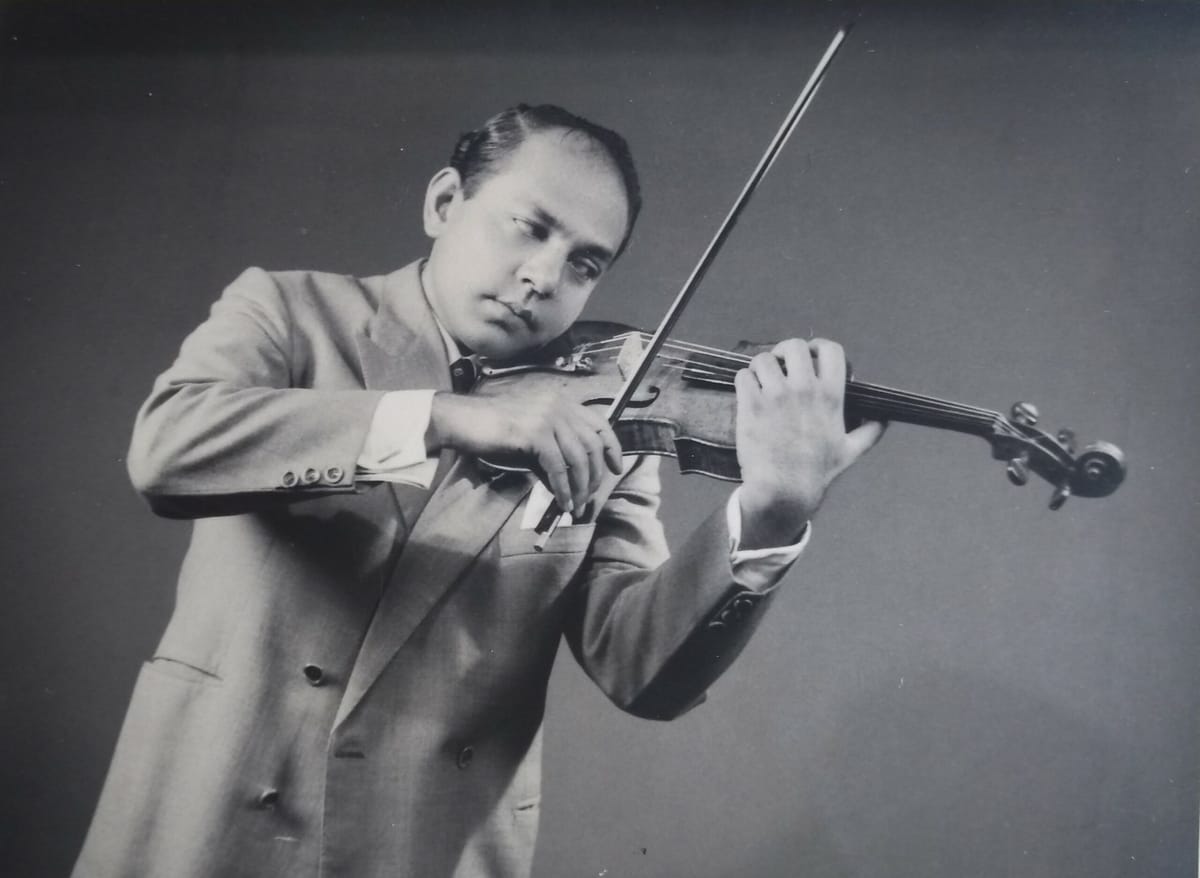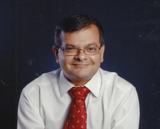Birth centenary of a forgotten music colossus

July 2021 marked the birth centenary of a truly great man, Vere da Silva (23 July 1921 – 13 January 1994), who has left an indelible impression upon me. If you Google his name, you find very little, which is unfortunate as he accomplished so much in so many spheres. I hope that this tribute begins to rectify this, in however small a measure. I’ll start with what I know of his timeline, from whatever I’ve gleaned from his family and other sources.
He was born in Thana, Bombay to Sophia (1890-1971) and Dr. Austin da Silva (1887-1960). Dr. Austin da Silva is part of Mumbai history as in 1942 he founded a 10-bed hospital in Bandra called ‘Silverene’ which has grown today to the Holy Family Hospital.
Dr. Austin da Silva also fits into my family tree as his sister Veronica married my great-grandfather Gen. Dr. Miguel Caetano Dias (1854-1936). His other two sons were Lester; and Vernon (1919-1990) who would become an eminent surgeon.
Vere must have shown musical potential when very young, as at the age of eight he performed on the Bombay radio, quite remarkable because radio broadcasting in the city was still in its infancy, having barely begun in 1923.
Unfortunately, the name of his violin instructor in those crucial formative years is now forgotten. If any reader can fill this or other gaps in the narrative, do get in touch.
I’ve been fortunate to find several mentions of his radio recitals in the 1940s on All India Radio’s ‘Indian Listener’ magazine.
He won an all-India award for English literature when in college.
Vere studied law and in 1947, while an articled clerk (trained solicitor) at the Cragie Blunt and Caroe firm (in which he was made partner the following year), he married Edna Pereira, (daughter of well-known physician Dr. Clement Pereira). The couple had three children: Maya, Laila, and David.
Vere’s violin technique benefited greatly from the instruction of one Spirinello, an Italian national who was interned in Bombay during the Second World War years, forging a lifelong friendship between their families as well.
In his bachelor days (in or before 1944), he founded Bombay’s first string quartet, the Dorian string quartet (Vere first violin; Wilfred Forbes second violin; Terence Fernandes (and later Keki Mehta) viola; George Lester cello), which performed regularly in concert and on the radio.
In the mid-1950s, Vere founded and conducted the Bombay City Orchestra. Rare audio-visual footage of the orchestra under Vere’s baton exists, with the famous American contralto Marian Anderson on her 1957 goodwill visit to India.
Vere’s brilliant career in law took him to England, but it didn’t stop his conducting or performing. He studied conducting further with the great Austrian conductor and musicologist Kurt Wöss in Vienna. Among his notable achievements with the baton in England was a concert in London’s Royal Albert Hall conducting the famous Boyd Neel Orchestra.
On his frequent return trips from the UK to Bombay, Vere continued to conduct, perform and lead the Dorian string quartet. Some of his solo and chamber appearances are chronicled in the Time and Talents Club archives, but there would have been many more.
I haven’t even yet mentioned how mad-keen he was about sailing, both here and in Europe. He was Commodore of the Bombay Sailing Association. The sailing fraternity ‘of a certain age’ will know more about his nautical achievements. He’d make impulsive sailing trips from Bombay to Goa, sometimes even arriving on Christmas Day, taking us by very pleasant surprise. Although he was a global citizen, with properties in Bombay, London, Malta and Geneva, and he globe-trotted on work, for music and on holiday, he loved Goa and Goan cuisine with a real passion.
Vere swept into my life on one whirlwind visit in the 1970s, when I was eight or nine. He certainly was my dad’s favourite relative (they were first cousins once removed). My usually stay-at-home dad would be in his second childhood when Vere visited Goa, going off on day and overnight trips with him, much to our amusement.
Vere would sometimes bring along a violin to practice even when on vacation, or he’d use one of the instruments in our house. I can still remember his intense concentration as he practiced in our living room. He could carry on for hours if his schedule permitted. I had been learning the violin for a few years, and would watch and listen from a corner. What I appreciated was that even though I was a little boy, just starting on the instrument, he took a genuine interest in my progress.
He’d suddenly turn to me, “Come on, boy, let’s hear you! How are your scales coming along?” and I’d rush to get out my fiddle and play for him.
I didn’t realize it then, but I know now just how much he taught me on those lightning visits. We would call them ‘master-classes’ today. I learned from him the importance of scales (“each note should be like a beautiful pearl”), arpeggios, dominant sevenths, working on bow-hold (I still remember the ‘squeezing a sponge’ analogy) and so much more.
Vere first introduced me to harmonics, natural and artificial. “Did you know your violin can also whistle like this?” It seemed like magic at the time. It was all I did for a long time after he left.
He knew my violin teacher Carlos D’Costa (1911-1983), music buddies from when D’Costa was on the Bombay orchestral circuit in the 1950s. I arranged a very emotional reunion between them.
I saw a conductor’s score for the first time thanks to Vere. He was scheduled to conduct Tchaikovsky’s ‘Serenade for Strings’ in Bombay and had carried the score with him on vacation. It was quite a revelation for me to look at a composition ‘from the inside’. It was like opening the hood of a magnificent vehicle and admiring its engine.
While I never had the pleasure of going sailing with Vere, I remember a magical trip with the extended family on a large vessel he rented, ‘Flor da Rosa’, leaving from the Panjim jetty on a picnic to Tontem.
I also remember with some nostalgia going with him along with my family on what seemed like a never-ending journey, on my first visit to his family resort Manoribel on the island of Manori.
In so many ways, he was my role model; I wanted to be like him. He was suave, exuded joie de vivre, brilliant at anything he turned his hand to but never boastful about his achievements.
The Marian Anderson 1957 concert could well be the only film footage of Vere that survives. His demeanour on the podium summarises how he was off it as well: alert, quick-witted, charming, self-assured, totally involved in what he was doing, attentive to others, but not at all concerned about the limelight or applause.
Take a bow, Vere Alban da Silva! You deserve it. Happy 100th to you!
This article first appeared in The Navhind Times, Goa, India.





